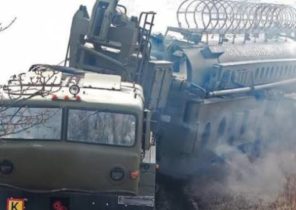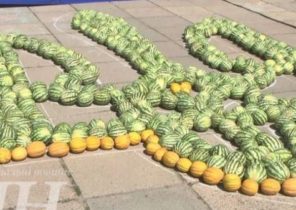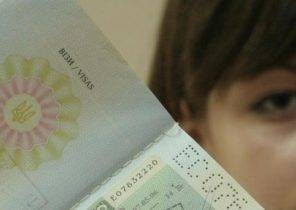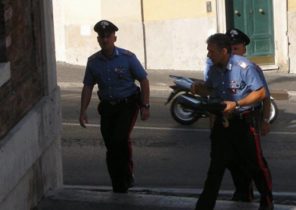In recent weeks become available dozens of tests for antibodies to the new coronavirus. Preliminary results of studies of these serological tests in the United States and around the world have become a media sensation. Optimism about these tests can be the key to returning to a normal life, but experts say the reality is much more complicated, and much depends on how you use the results.
Tests for antibodies can help scientists understand the prevalence of covid-19 among the population. But since the accuracy of the tests has its limitations, and issues of immunity, there are many unknown, they give much less information about the former infectious diseases and protection from future infections.
“Now, the focus is mainly on epidemiology,” says Professor of epidemiology College of public health Kent state University Professor, Tara Smith (Tara Smith). This approach implies attempts to ascertain the proportion of the population that have already been infected, although some people have not had any symptoms. “This will allow us to better calculate the number of deaths and determine either how much more we need to be to have herd immunity, or when a significant portion of the population will be immune to the disease thanks to vaccination and previous infection, explains Smith. — And this will allow us to study the duration of immunity.”
Mass serological surveys are conducted in different parts of the United States, but the results vary greatly. If the evaluation of positive antibody tests in new York make up almost 25%, and in Chelsea, Massachusetts, 32% in the California counties of Los Angeles and Santa Clara they be 2.8 to 5.6% and 2.8%, respectively.
These results confirm the suspicions of experts, created on the basis of case studies of asymptomatic infection: covid-19 distributed much wider than it is shown data from hospitals. But scientists have criticized some of these studies, speaking about the fallacy of the methodology of sampling of the possible shortcomings of the statistics and that the results announced at the press conferences instead of subjecting them to peer review and to start to publish on specialized sites.
These problems of methodology and alleged lack of transparency are compounded by the fact that many tests do not meet the requirements. Numerous test systems that flooded the market today have been verified by third parties. And those that have received permission to use in emergencies from Management on sanitary inspection behind quality of foodstuff and medicines, may not be sufficiently accurate in the assessment of incidence beyond the foci of infection.
Center for safety health at Johns Hopkins University maintains and regularly updates a website, which lists the characteristics of many existing and develop serologic tests for the virus SARS-CoV-2, which causes covid-19. The experts recommend to check tests in the course of the study, involving at least 100 patients with positive test results and 100 with negative test results who are confirmed by diagnostic studies and symptoms. Commercially available tests for antibodies tested and confirmed by only dozens of people, and only in some cases, these people more than a thousand. At the moment the security Center in the field of health has compiled a list of tests approved for research work and for individual use in the United States, which detect antibodies having their people with an accuracy of 82-100%. Such accuracy is called sensitivity. And the ability to correctly detect antibodies only to those who have them, called specificity, and here the figures are from 91 to 100%.
At first glance, this is a very good numbers. However, the “threshold is set by the context,” says associate Professor Sarah Kobi (Sarah Cobey), dealing with the problems of ecology and evolution at the University of Chicago. “Thus, if the seroprevalence or a large proportion of people with antibodies from SARS-CoV-2, is three percent versus five, it is a very good test, she explains. — But if you are only trying to determine the seroprevalence exceeds 50% or not up to that figure, then the test is not very good. But covid-19 nobody in this category do not fall.”
Such variability of acceptable tests is due to the fact that the population with higher prevalence of the disease or previous infections of true-positive results (that people tested positive for having antibodies to the disease from previous infection) and false-negative results (people with a negative test result, but who have antibodies) more common. Meanwhile, among people with a lower prevalence of disease tests often give false-positive results.
In the County of Santa Clara conducted a preliminary study on the test for antibodies, and concluded that its specificity is equal to 99,5%. However, the epidemiologist Trevor Bedford (Trevor Bedford) from the University of Washington tweeted that if the specificity of the test was 98.5%, i.e., within the error, which is determined by scientists, then all the “positive results” of the study could be a false positive.
In part, these problems can be eliminated due to the construction of models that take into account such a factor of error. However, the overestimation of the prevalence covid-19 may lead to underestimation of deaths and hospitalization rates, or to overconfidence in collective immunity. Currently, the appearance of such immunity is necessary that the virus has infected about 70% of the population. This figure anywhere, even in such hotbeds as new York. And this kind of error, in turn, can lead to decisions that negatively affect the health of the population.
Further, the overestimation of the number of people with antibodies to SARS-CoV-2 can generate an unfounded sense of security regarding the diagnostic role of tests. Because false-positive results are more common in areas where the incidence is low, says Smith, “there is a possibility that people will develop wrong impression about his status for the antibodies. If they are false positive, they can calculate that got immunity, and weaken individual protection measures, although in reality no immunity, they have not.”
Experts warn that at this stage even the best tests for antibodies to SARS-CoV-2 at the individual level do little good. It’s been over four months since then, doctors in the Chinese city of Wuhan was first diagnosed with the new coronavirus causing covid-19, and scientists still don’t understand how it reacts with our immune system. Research more and more clearly indicate that the majority of infected probably develop antibodies to the virus, but it is unclear whether these prevent antibodies reinfection, and for a time continue to be immune system.
“We do not know the natural course of the disease. We can only say that if a person has a good analysis on antibodies, and he trusts the result that is positive, it means that he really was infected,” says Professor of epidemiology of school of public health University of Colorado Professor Mei Chu (May Chu). “We don’t know, protect these antibodies. And we won’t know about it for months, until someone from the number had been ill again not to get a virus, and we understand, sick or not,” continues Professor Chu, is part of the expert group of the who that deals with infectious control and prevent the spread of the epidemic covid-19. April 24, the who published a scientific review, which warned about the inadmissibility of the use of the so-called “immune passports and certificates of resistance to risks”. There are reports that people give a positive result on tests for the virus and after recovery, received at discharge from the hospital, a negative test result. But there is no evidence that this is re-infection. Some experts believe that the antibody tests will help determine whether such cases are the result of reinfection or “re-identify” caused by clinical negligence.
Scientists are trying to understand the behavior of the pandemic in different countries. However, tests for antibodies to SARS-CoV-2 are still in the research stage. Now in the United States conducted a nationwide study to collect samples from tens of thousands of people, and they will last for another two years.
The ability to conduct testing for active infection is distributed across the country unevenly. And antibody tests give you the opportunity to shed some light on the situation where there are no resources to confirm active cases. “It is extremely important that the various regions have carried out their own serological research to find out exactly how transmission is occurring, says Coby. — The only way to adapt the intervention to local conditions”.







